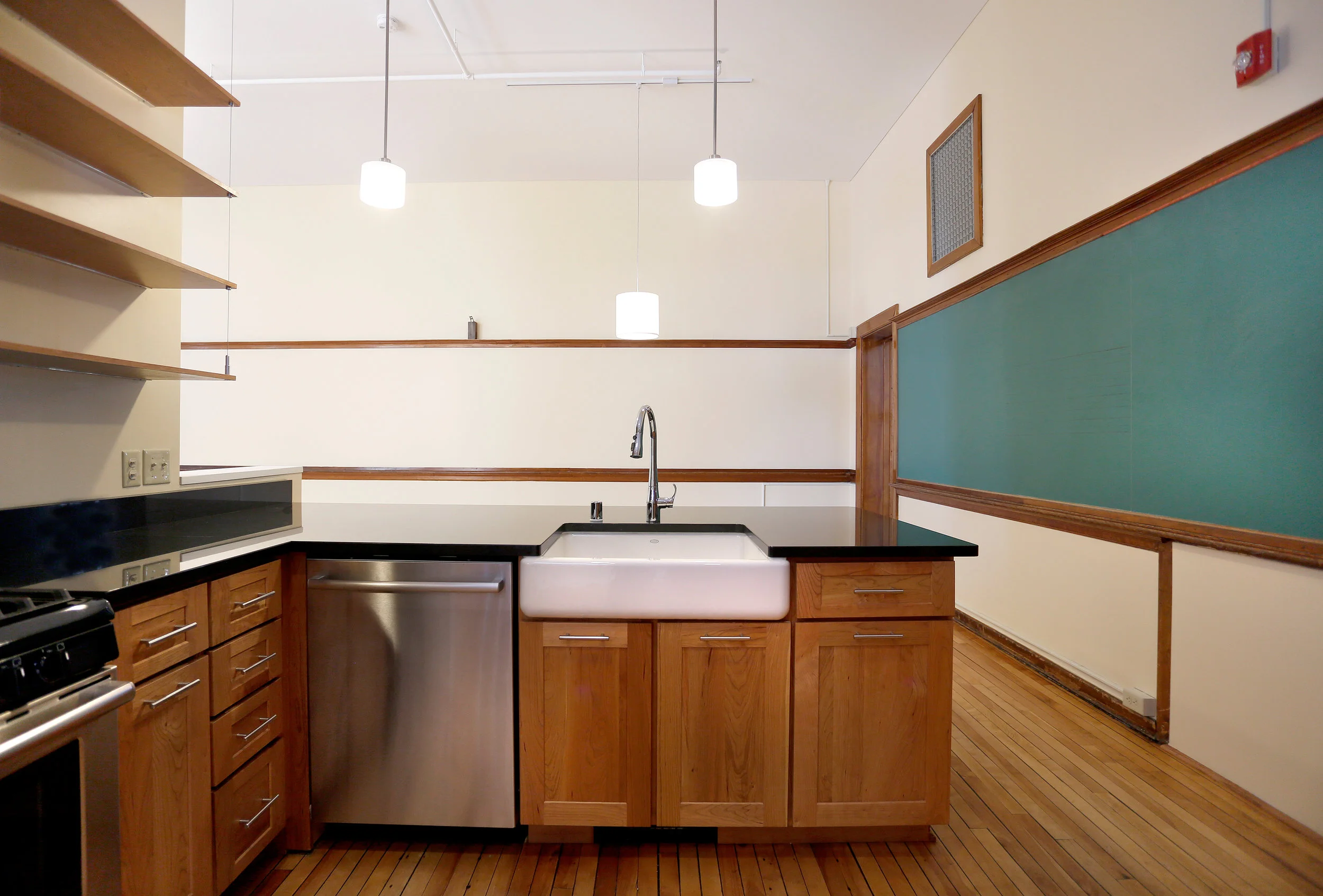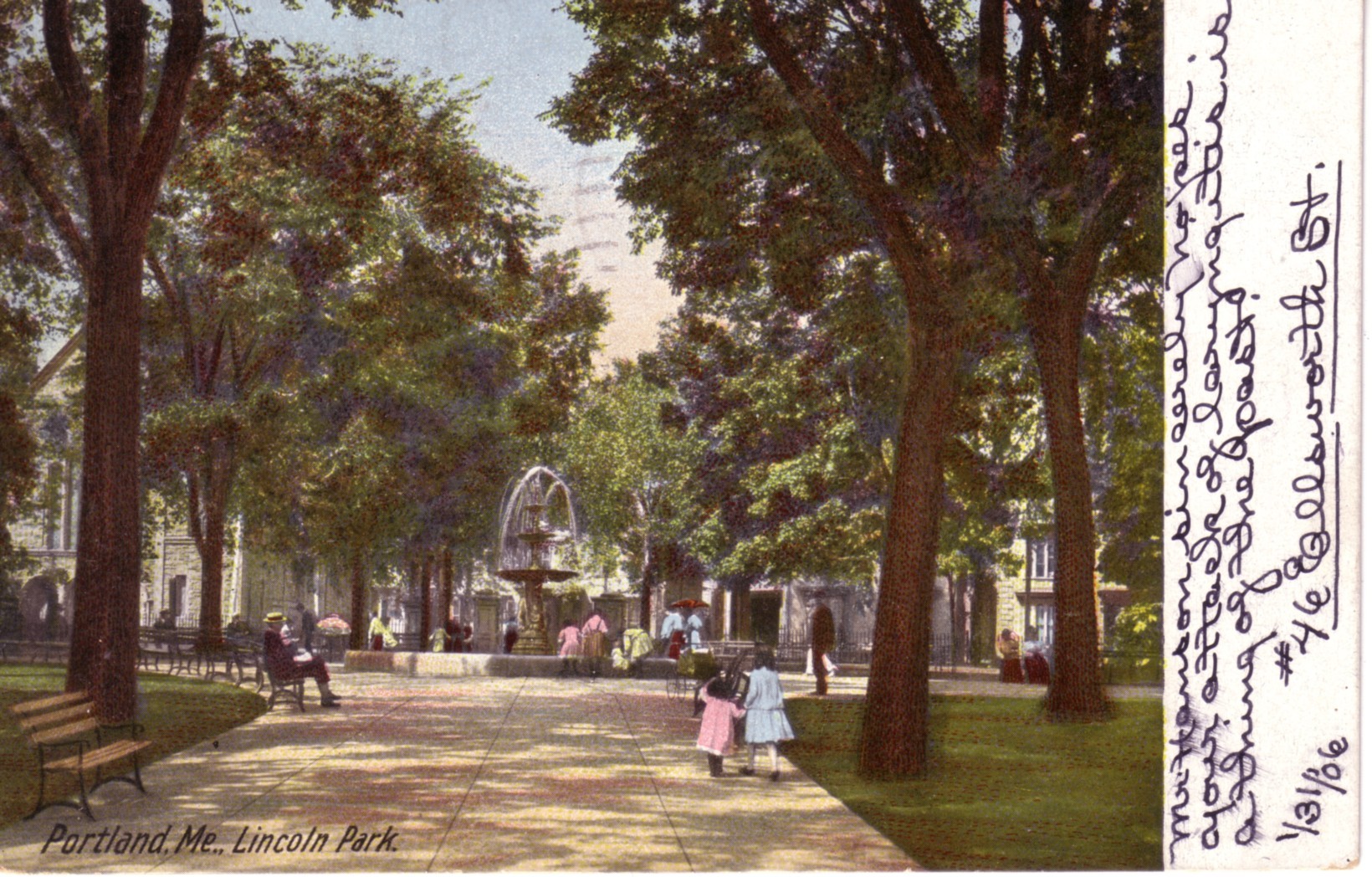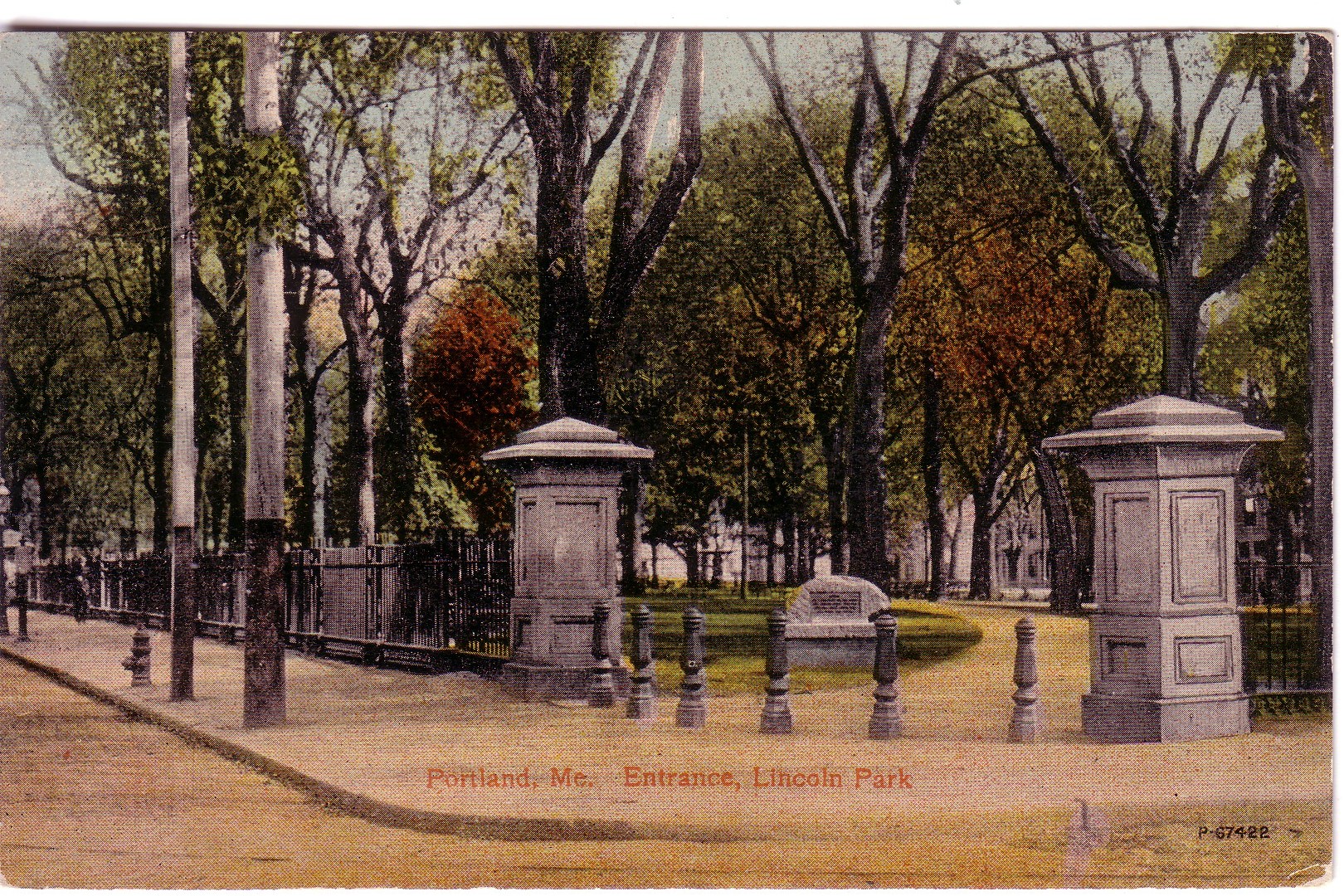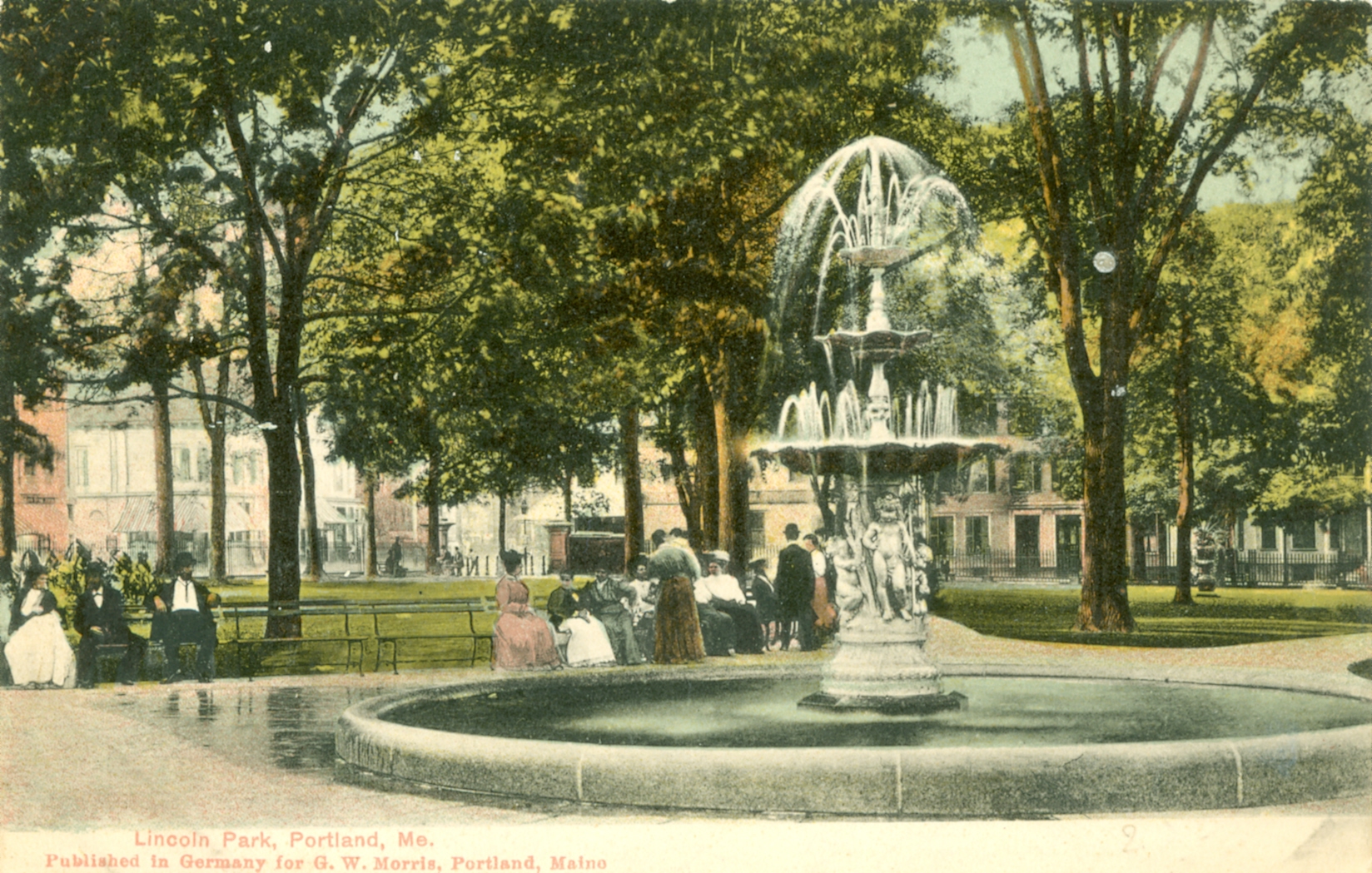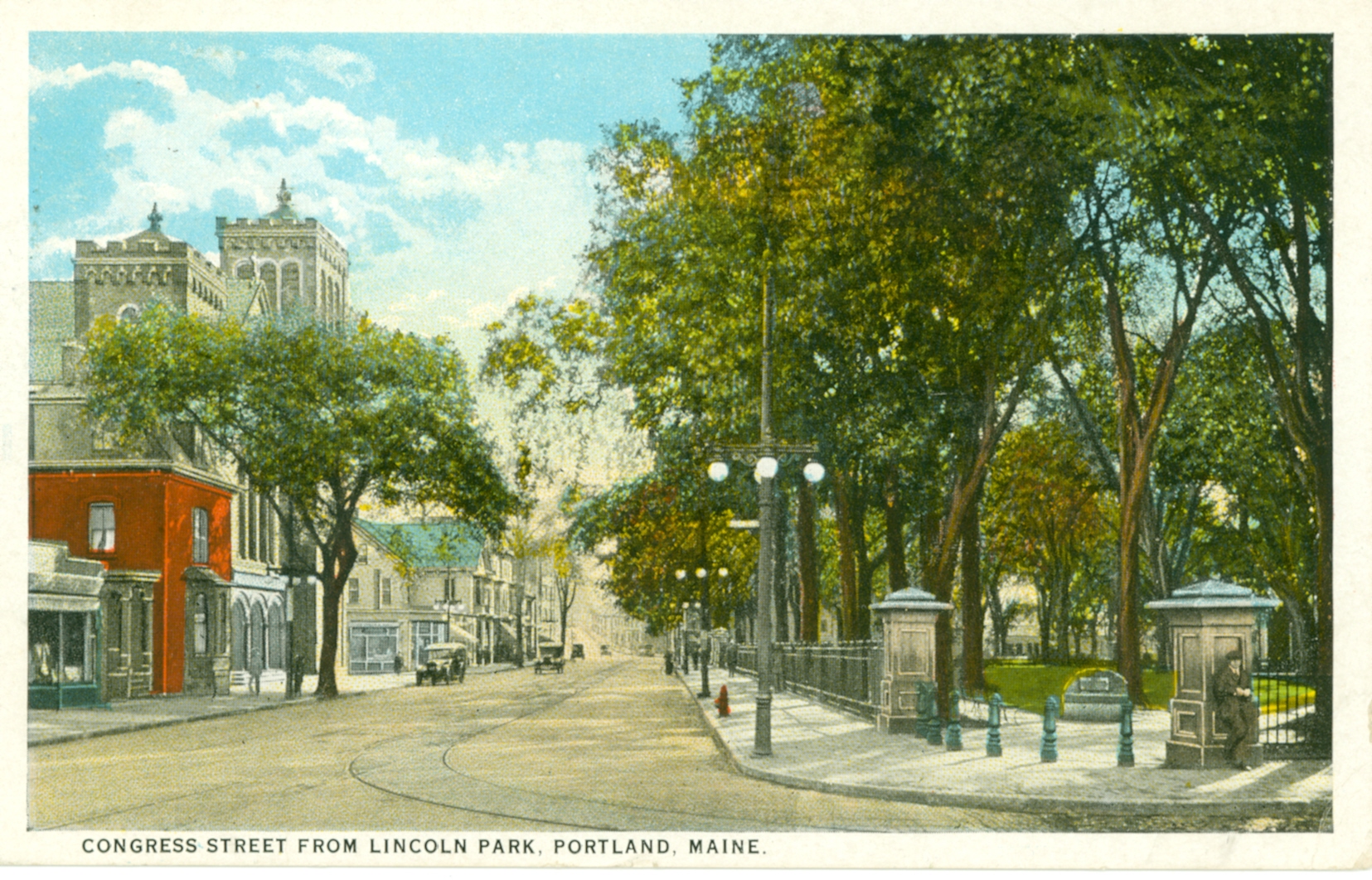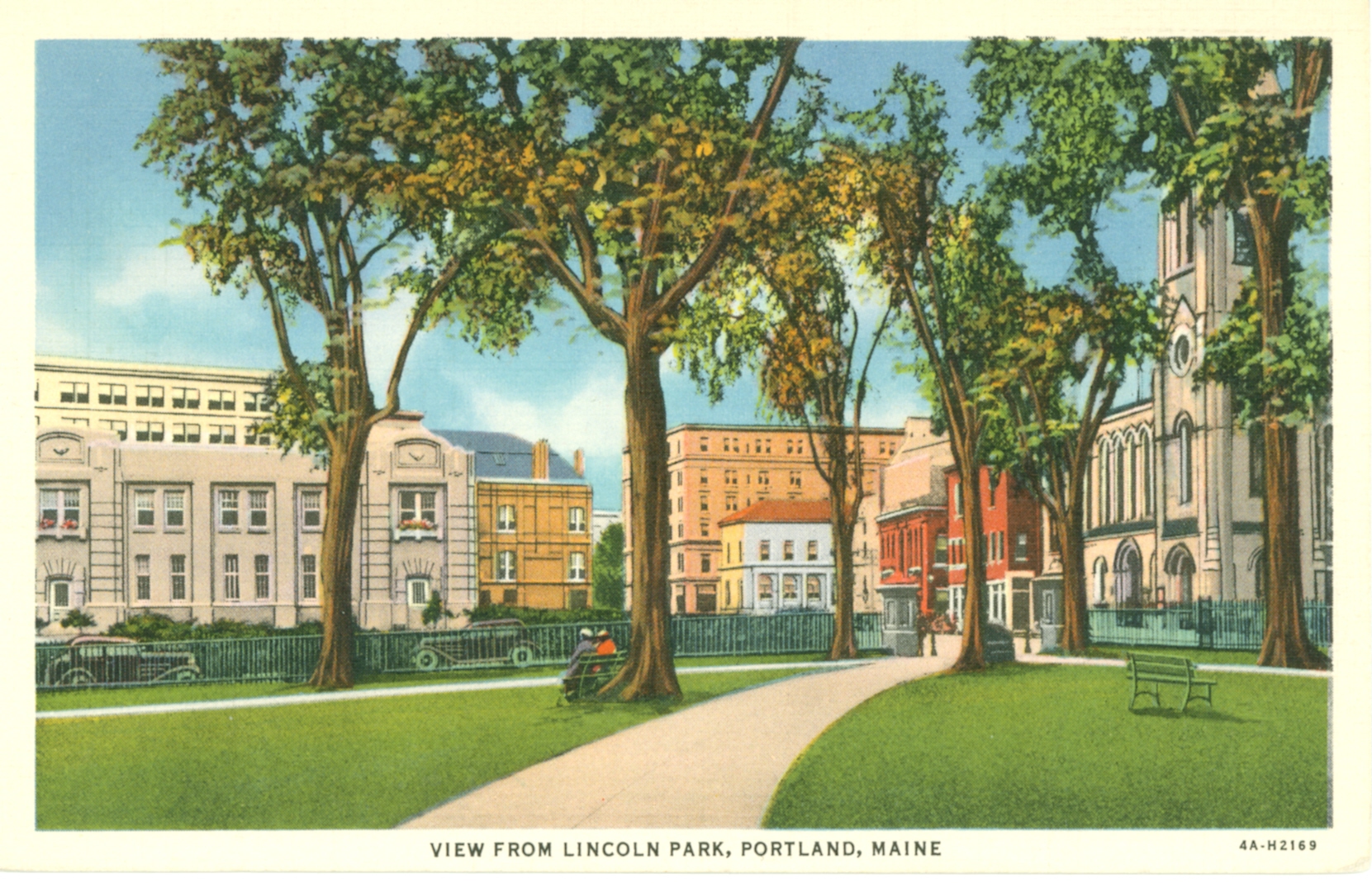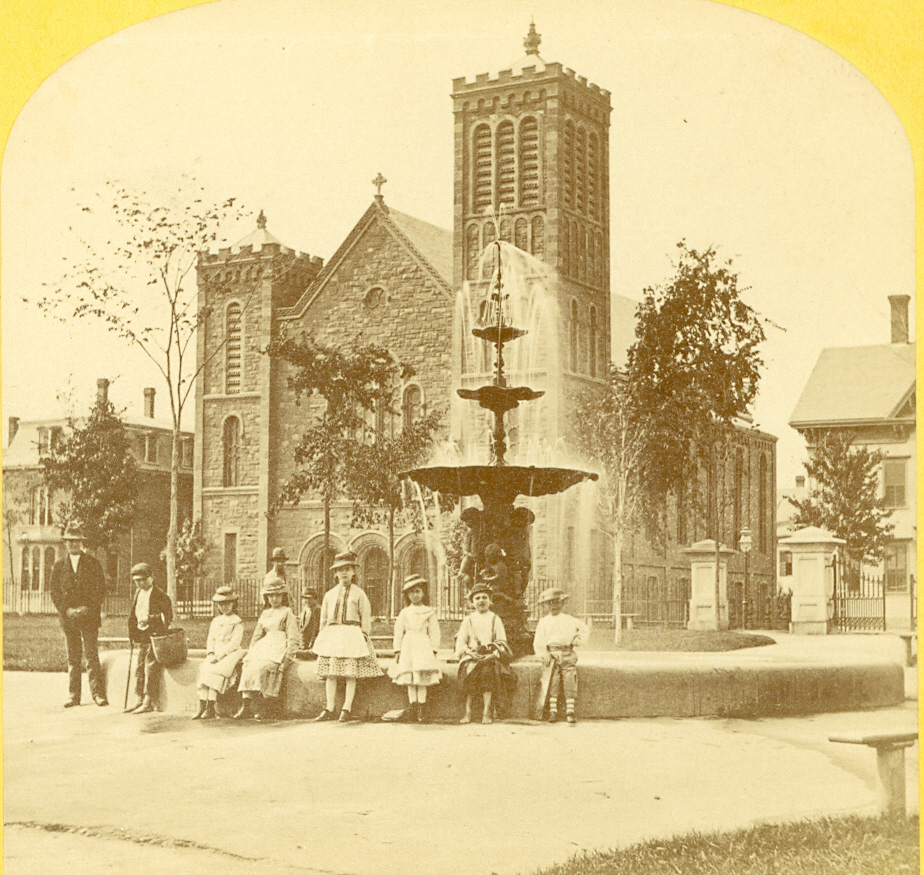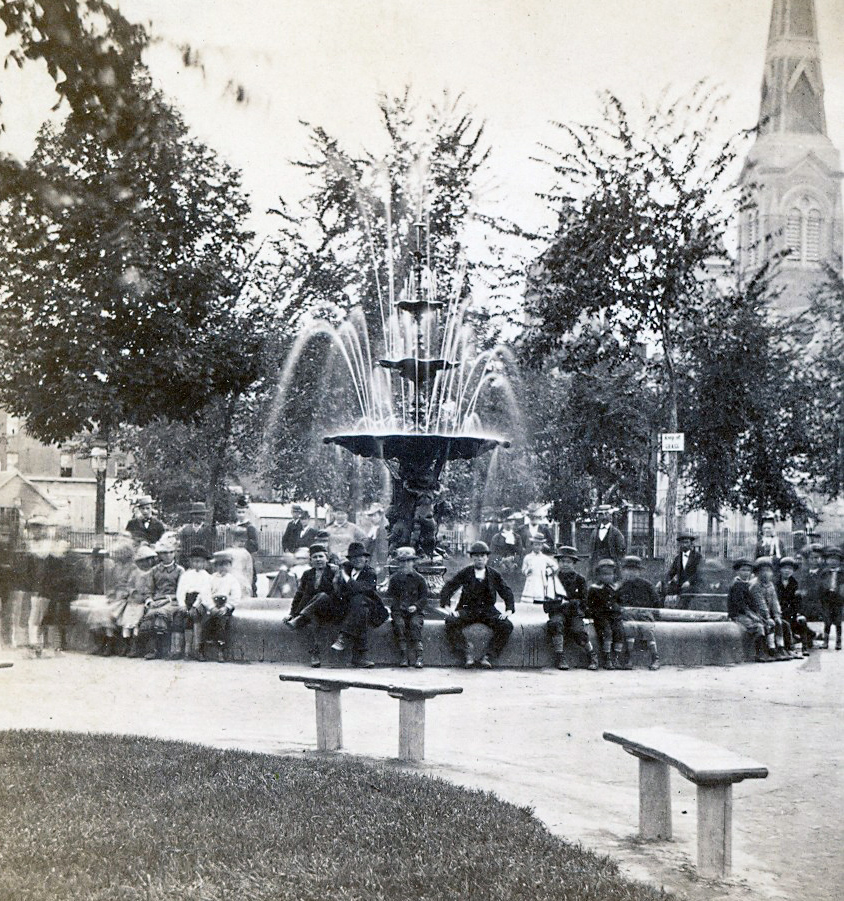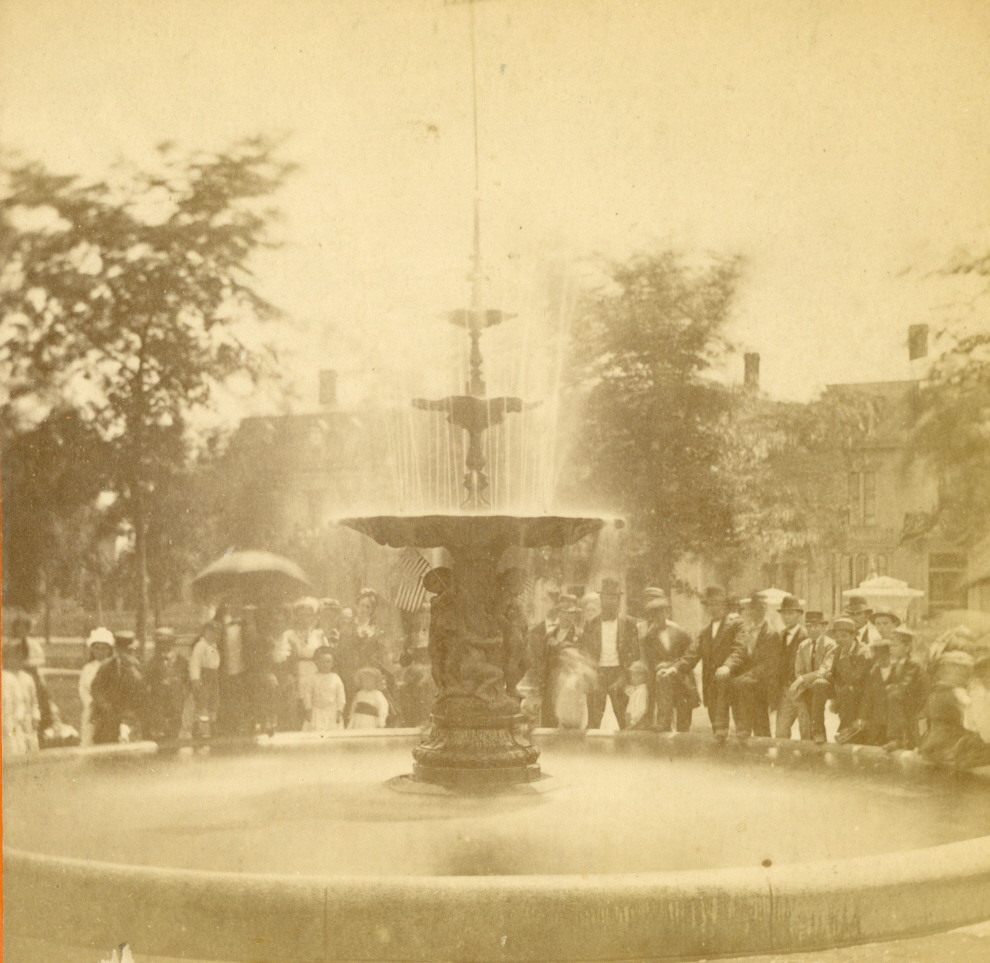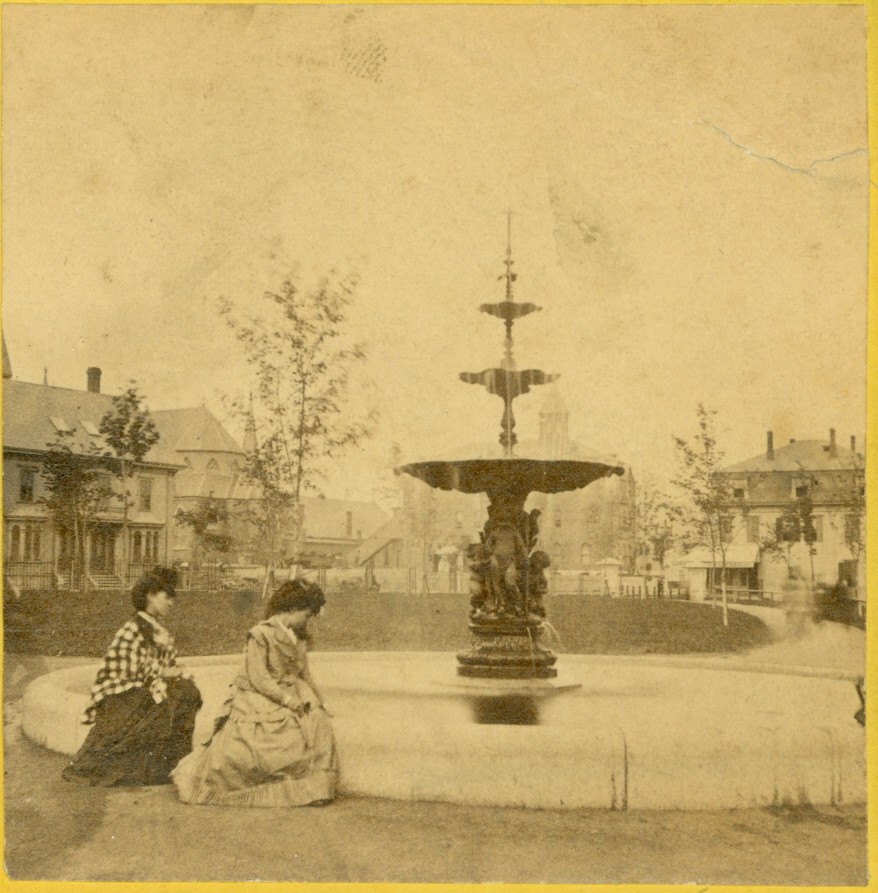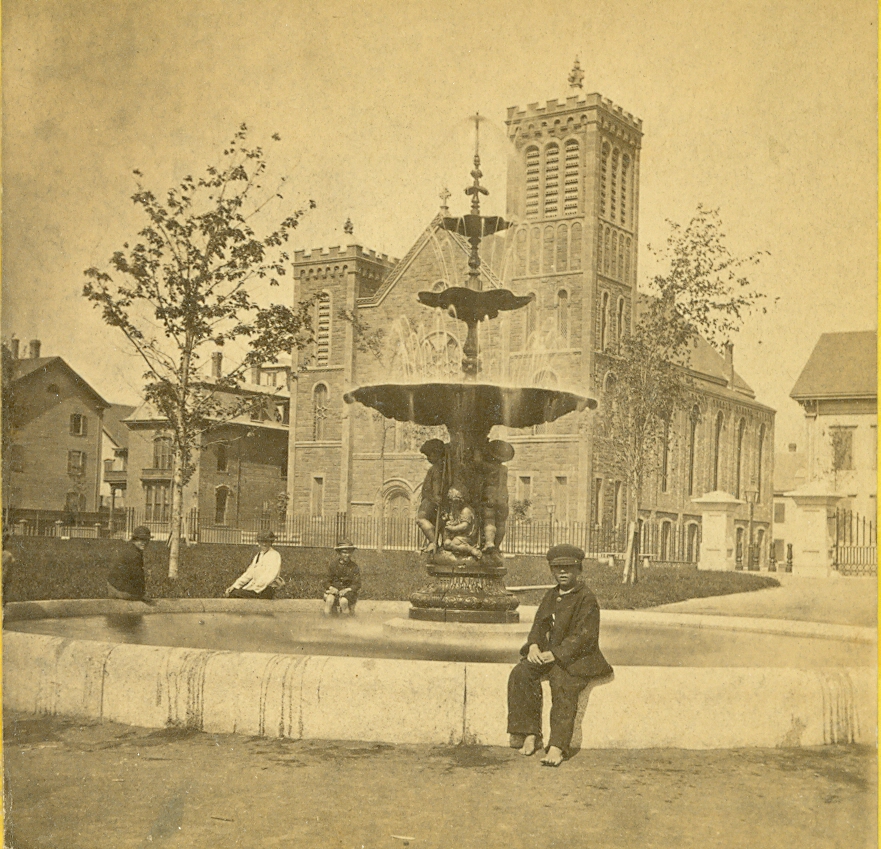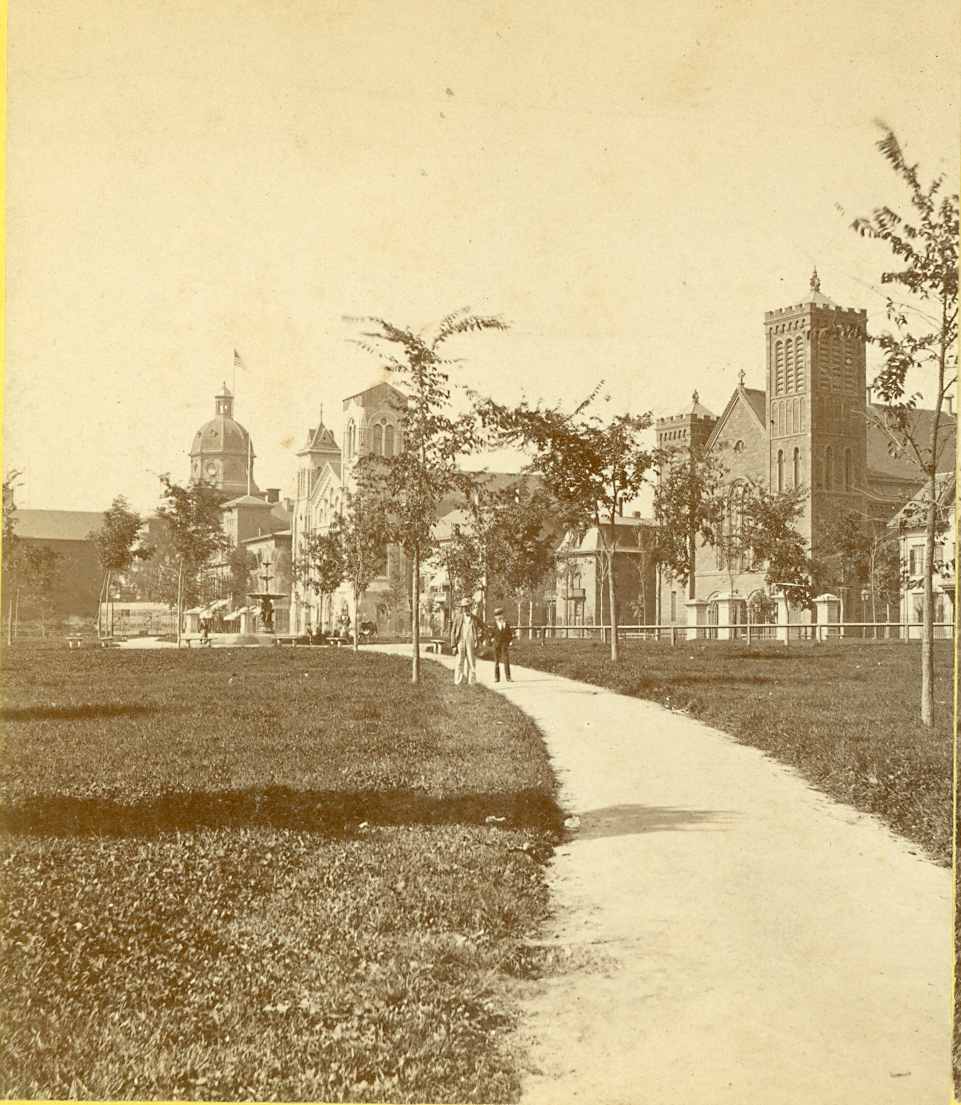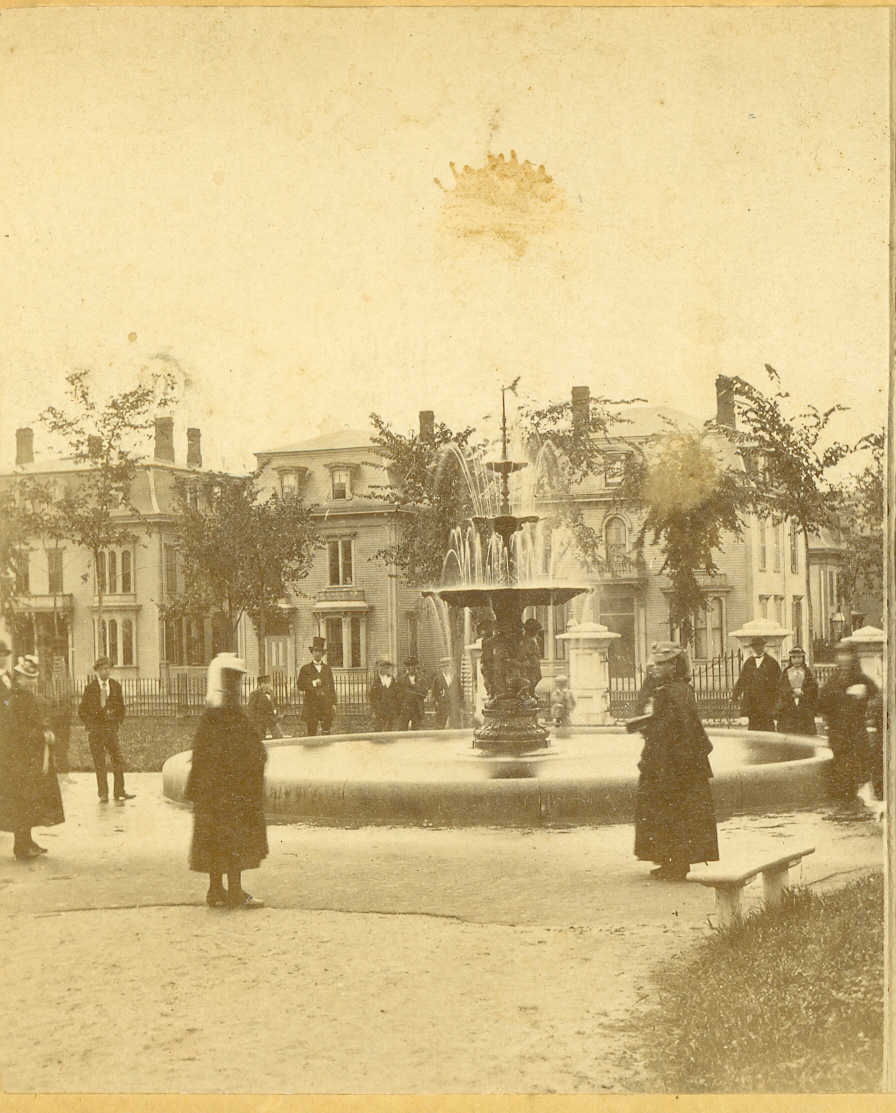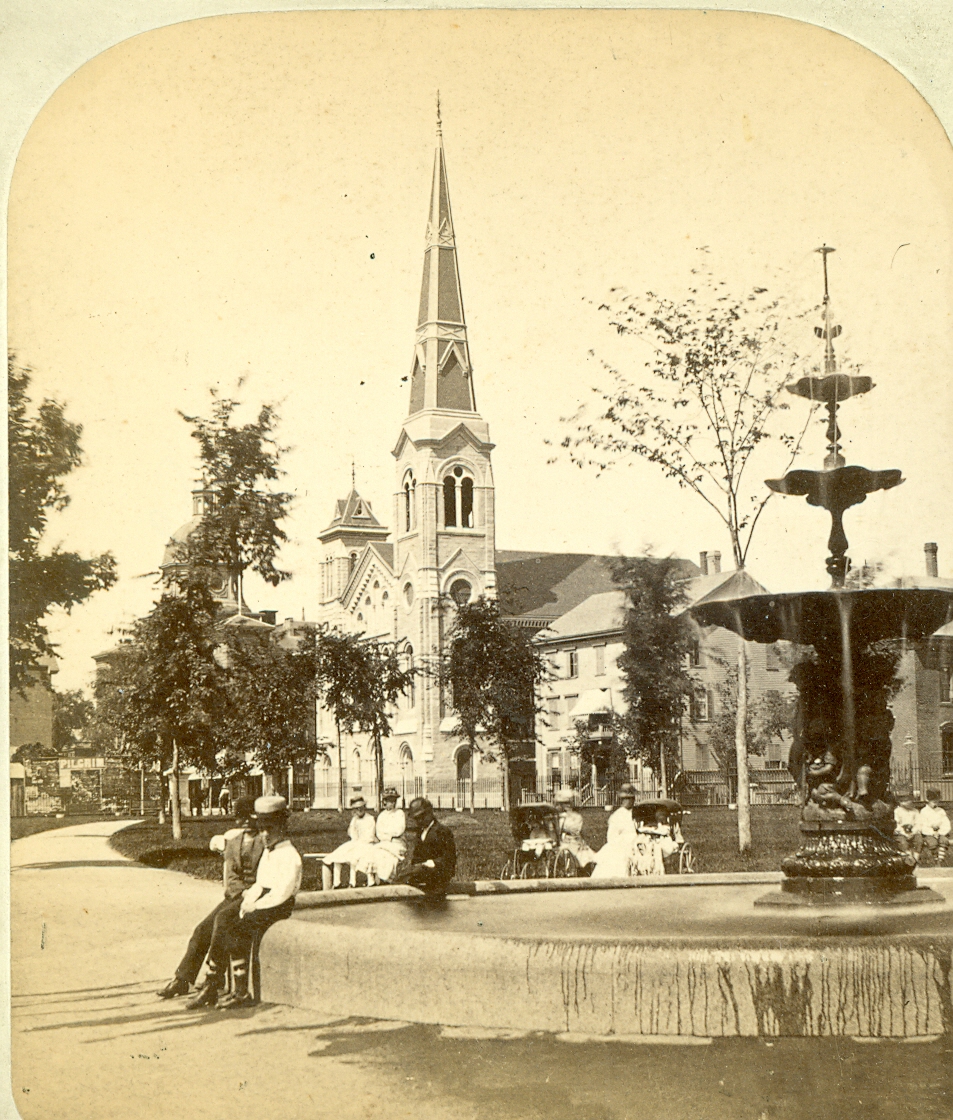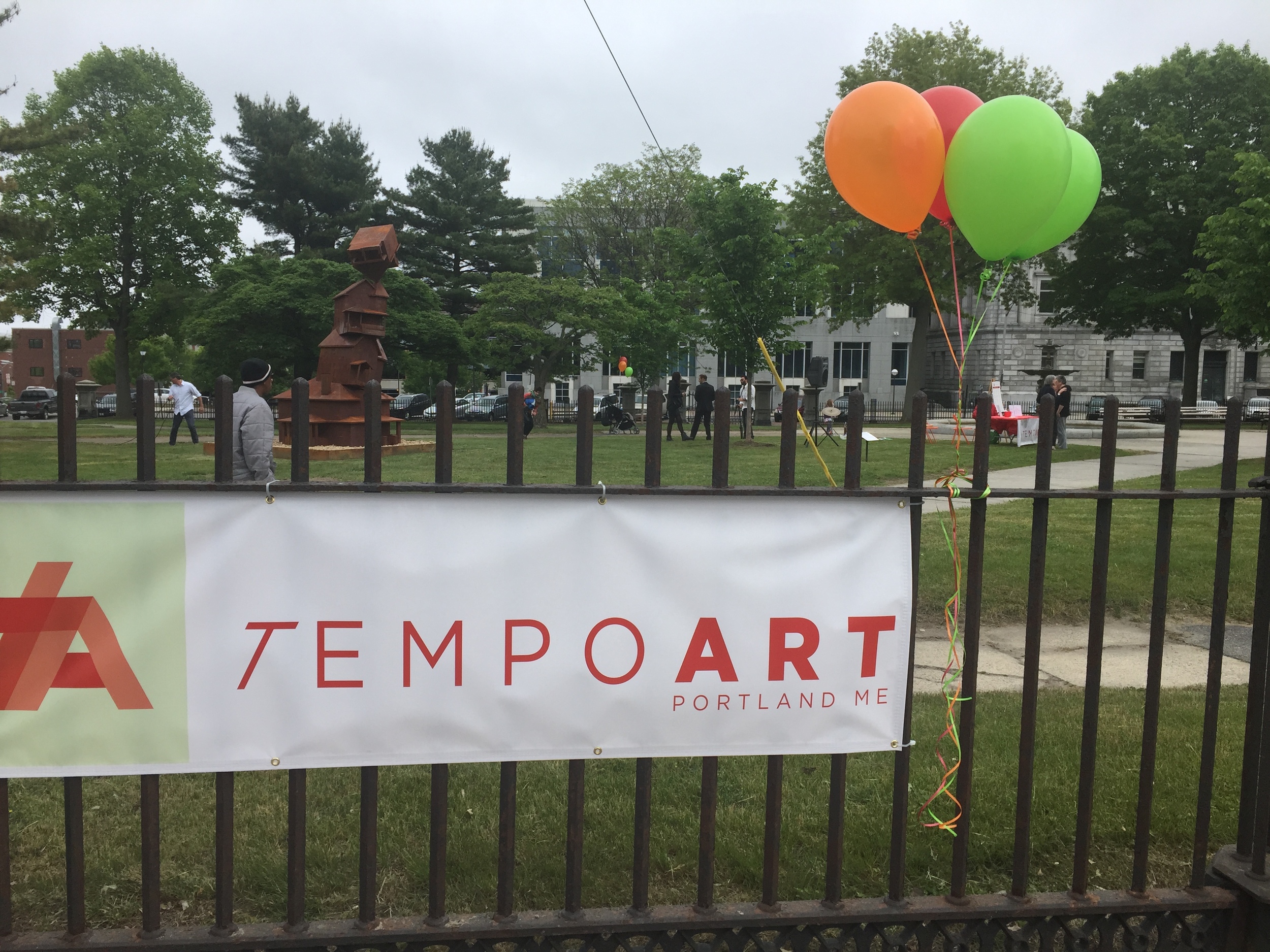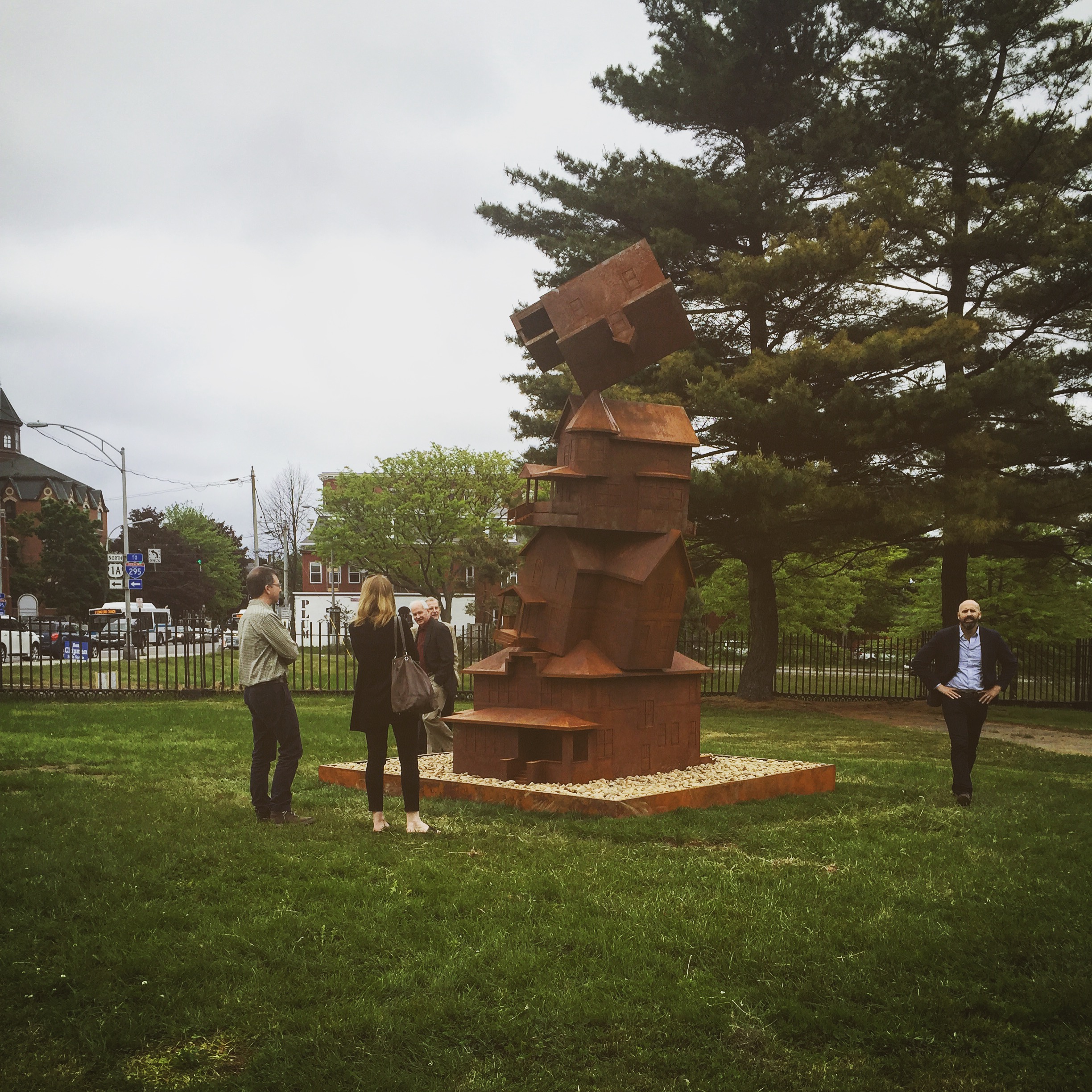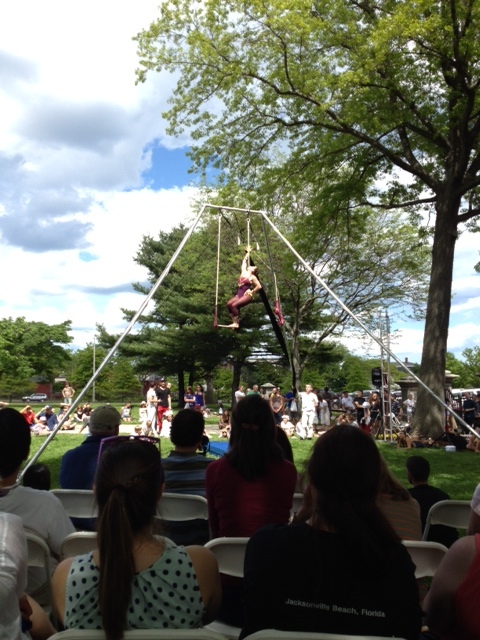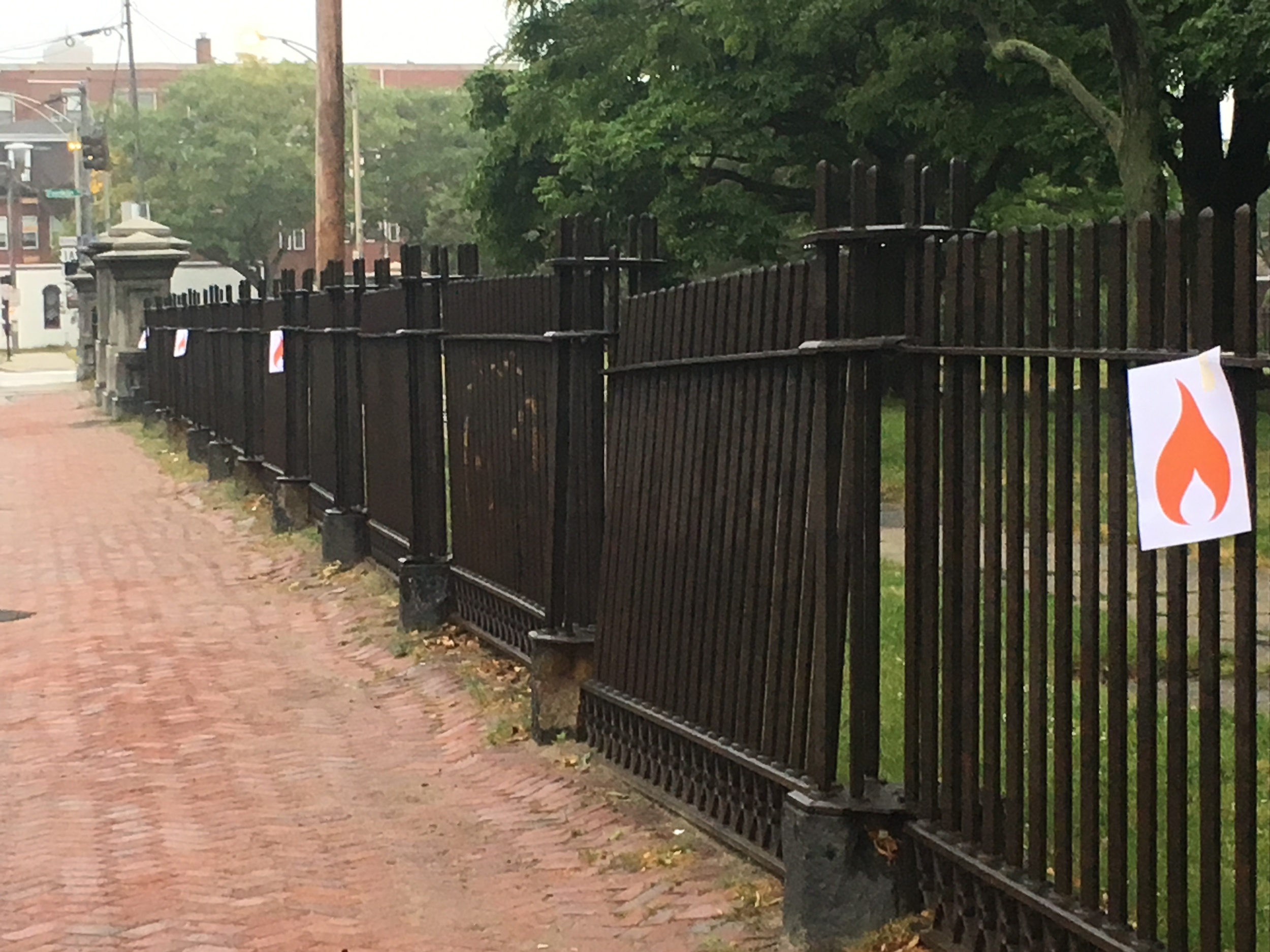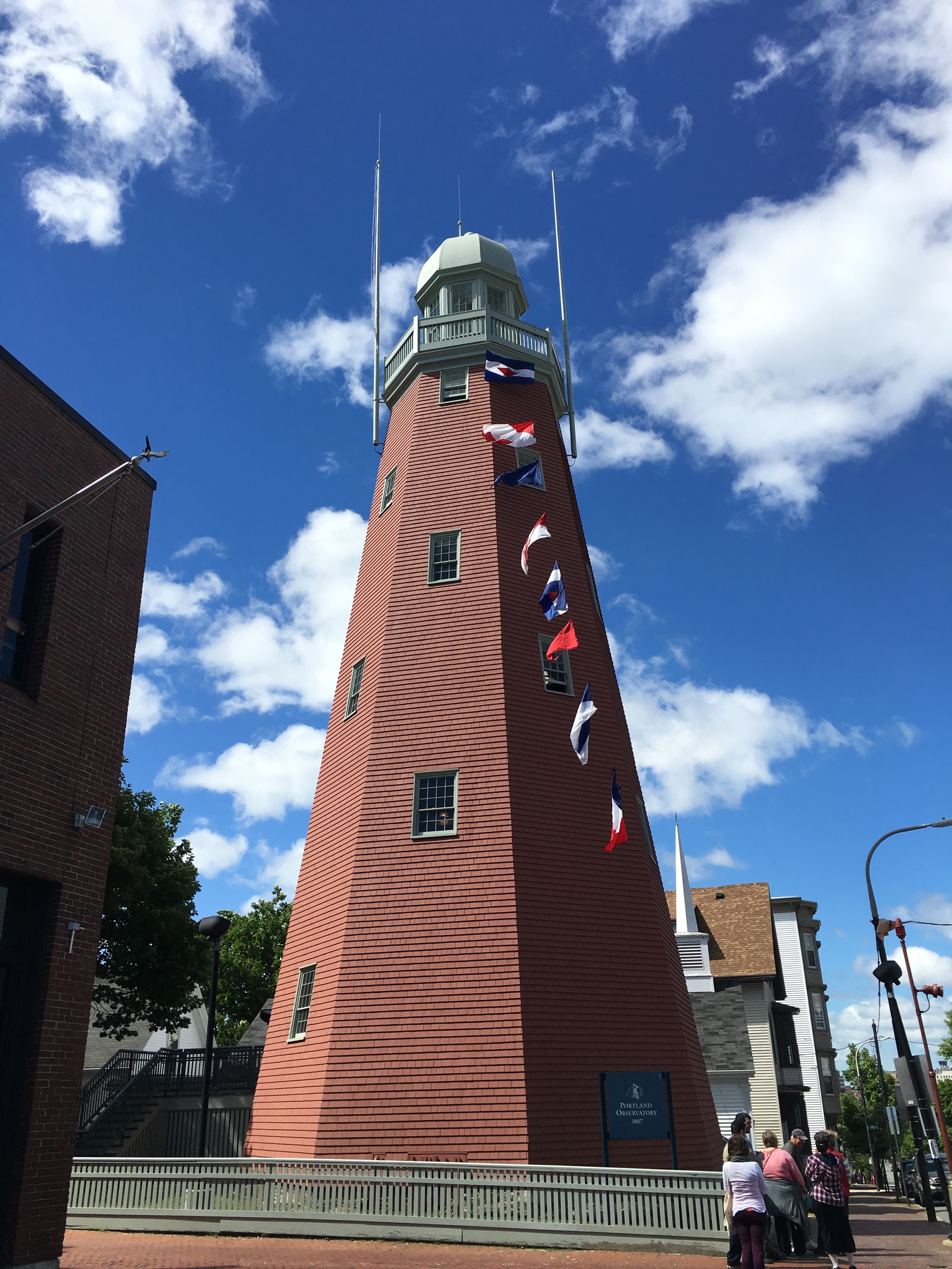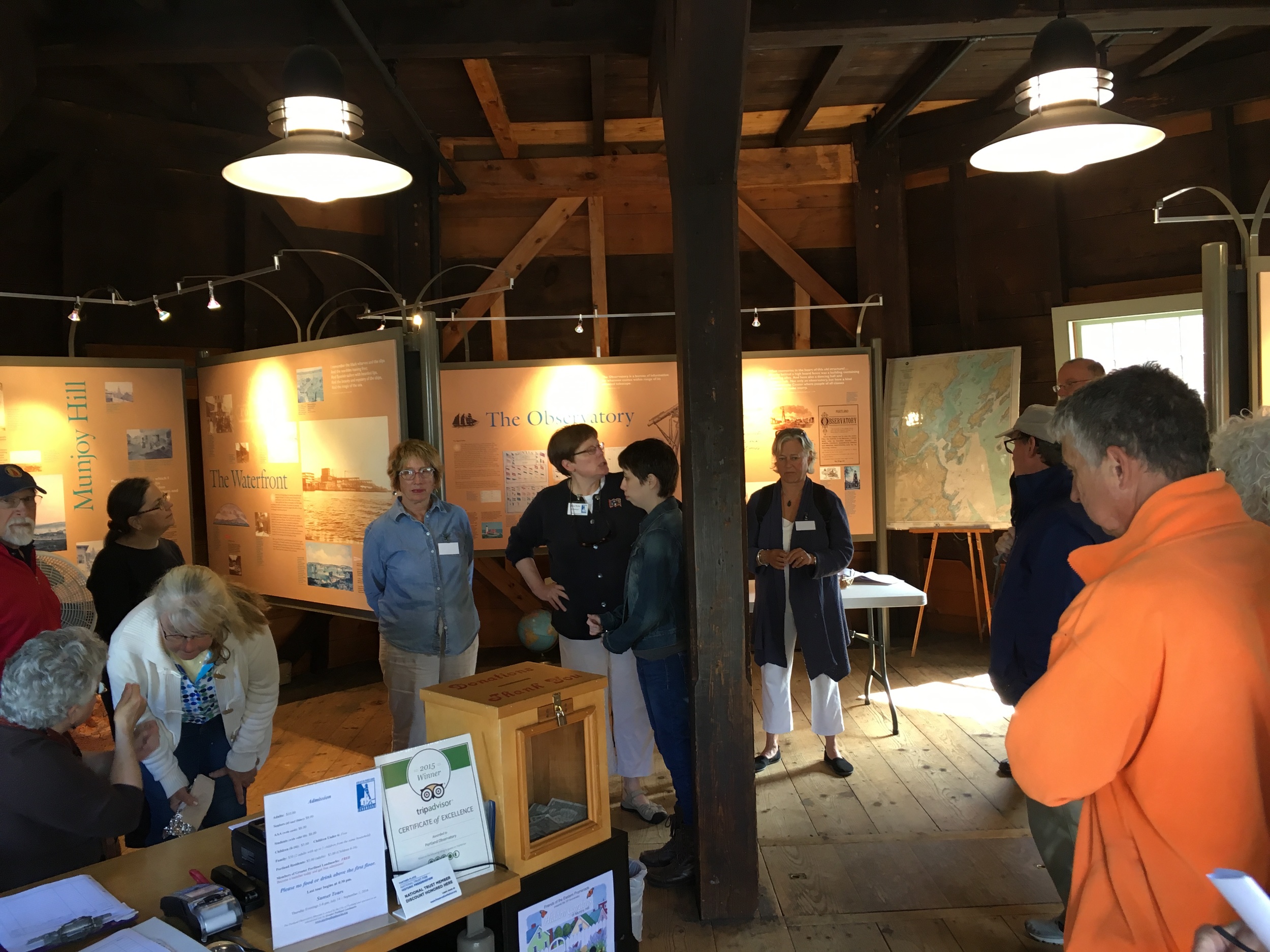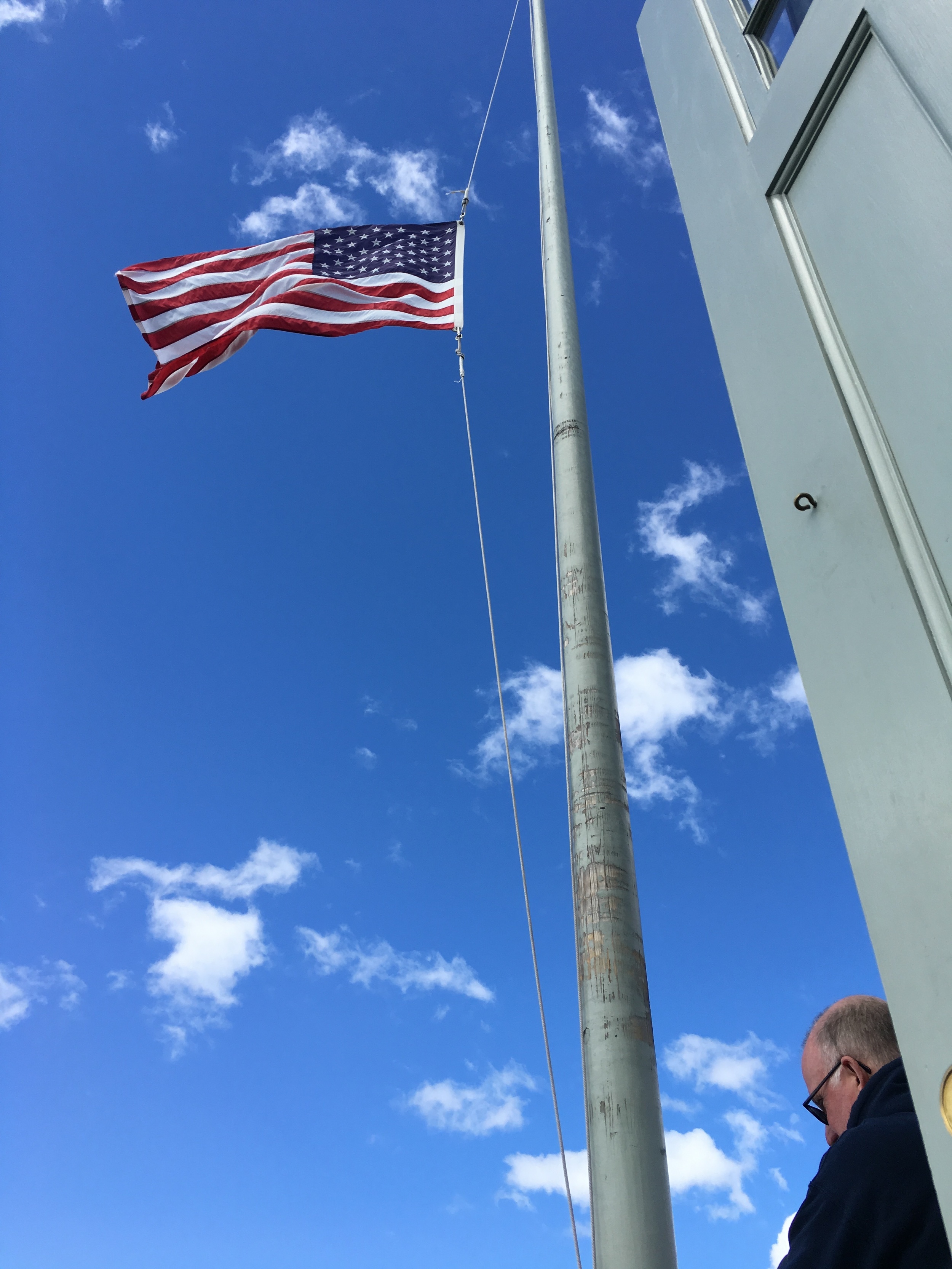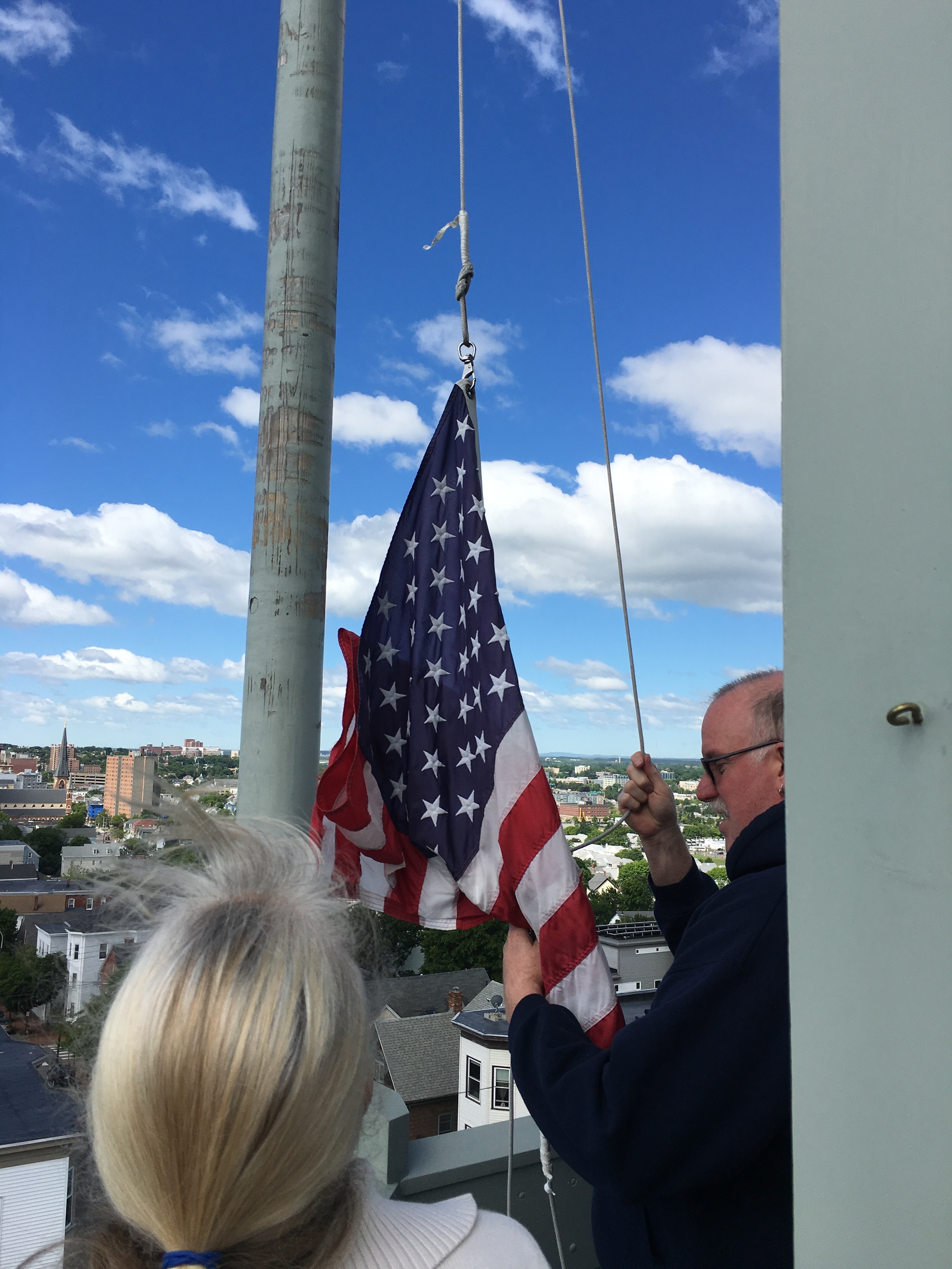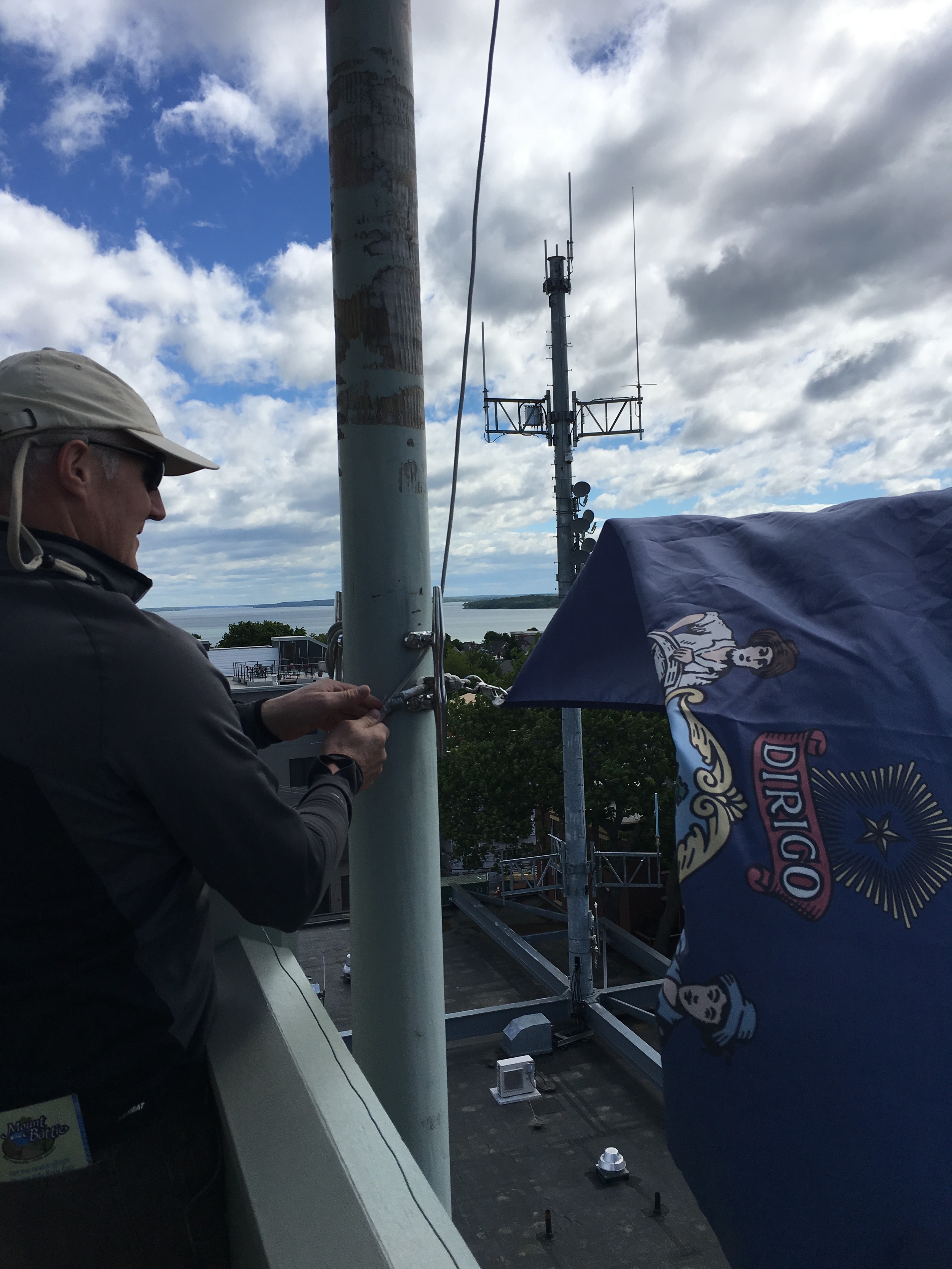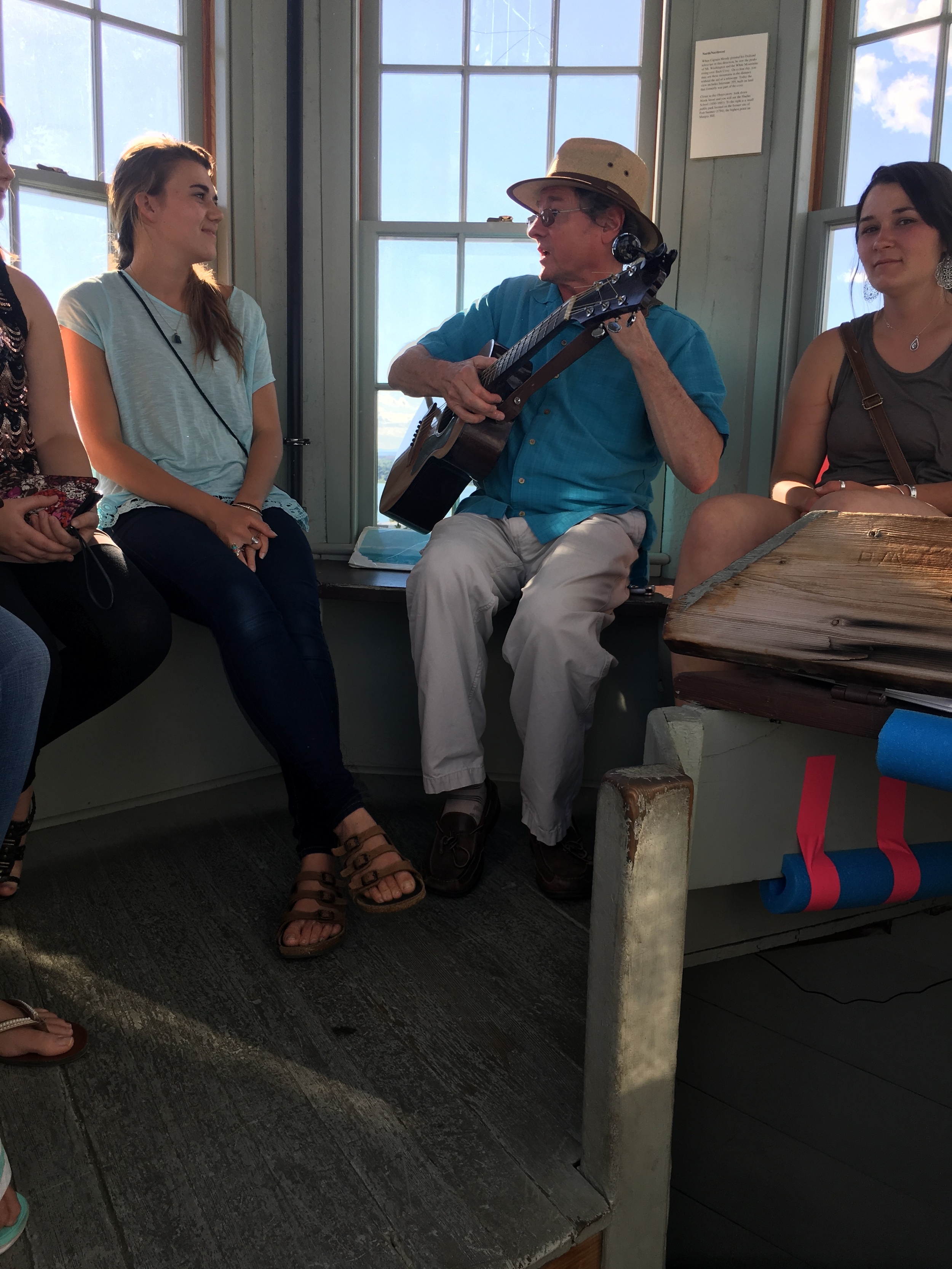Have you ever visited Fort Sumner Park to watch the sun set over Portland? A proposed development below the park on Sheridan Street is focusing attention on the history of the park. If you'd like to learn more about the history of the fort that once sat atop Munjoy Hill, check out this history of Fort Sumner by local historian Ken Thompson in the Munjoy Hill Observer.
Developer, City, and neighbors may have an agreement on a new life for the vacant Reed School
Vacant for several years, the City has been working with developers and neighbors to find a new use that is compatible with neighborhood goals and economically feasible. Developers Collaborative, the developers responsible for the successful adaptive reuse project for the former Nathan Clifford School in Deering's Oakdale neighborhood have developed a plan to reuse the Reed School as a pre-school for special needs students. Read more about the proposal here.
Meet Our Summer 2016 Interns
This summer Greater Portland Landmarks was fortunate to have two interns, Liz King and Anastasia Azenaro-Moore. Surveying Portland’s Oakdale neighborhood was their major collaboration and not only did they record important information about this unique neighborhood, they also had an opportunity share knowledge and experience with each other. They both observed that the city is trying to understand the same questions they tackle in their academic studies: how and where do historic preservation, gentrification, housing, and public use all collide? Landmarks was lucky to spend a summer with these dynamic women and the future of historic preservation looks bright.
When School becomes Home: Adaptive Reuse
As communities grow and change, school buildings also need to evolve with the people they are built to serve. In greater Portland there are many examples of school buildings being re-purposed and their architecture and social significance celebrated once again. Now that school is back in session we want to highlight these schools.
Remembering the Demolition
In the 1960s Portland lost two great architectural landmarks, with the destruction of Union Station on St. John Street and the Grand Trunk Railroad Station on India Street. With the decline in passenger rail service in the 1960s, both stations were made obsolete. Union Station was replaced by a shopping center, while the Grand Trunk Railroad site is now occupied by a pumping station. The loss of these unique landmarks continues to energize many Portlanders to preserve the city’s historic buildings.
Woodfords Corner in the News!
The Independent Order of Odd Fellows' building is an architectural landmark on Forest Avenue. The Odd Fellows continue to serve as outstanding stewards, maintaining the large masonry structure designed by Francis Fassett in 1897. The building has served as the Odd Fellows Hall, a Masonic Temple, Deering's City Hall, a school for neighborhood students, and a host of commercial tenants in its 120-year history. The historic building is even more impressive with the recent restoration of the clock tower. Read more about the Odd Fellows and the clock tower project in a recent Portland Press Herald Article here.
Make your voice heard and help the Public Art Committee decide which of three sculptures should be located in a new park in front of Odd Fellows Hall. The comment period closes August 26th.
For more advocacy updates, visit the Ongoing Issues page.
This Place Matters: Duck Pond, Westbrook
Duck Pond Corner, a former rural village in Westbrook is bisected by one of the state’s busiest transportation corridors, Route 302. The Intersection of Duck Pond and Hardy Roads with Route 302 is a high-crash site and the Maine Department of Transportation (DOT) is proposing a roundabout to make the intersection safer. However, local residents are concerned about the amount of land needed for a roundabout and the impact a roundabout might have on the historic buildings adjacent to the intersection. Greater Portland Landamarks is working with Westbrook’s Duck Pond Historic District Committee to document historic resources in the area where the Maine DOT is proposing a new roundabout and to create a National Register Historic District in the village. Below is a picture of a community presentation on Westbrook's history from keepmecurrent.com
This Place Matters: Lincoln Park
By Anastasia Azenaro-Moore
Picture this: It’s a Saturday in the summer of 1872. The peninsula is hot and humid and everywhere you turn, the city is buzzing with industry. Factories along Back Cove are creating shoes, shirtwaists, ropes and other essential goods. Trains rumble up and down Commercial Street transporting goods between the busy wharves and the city’s train stations. With the city’s economy growing, more and more Irish immigrants make Portland their home, settling in the neighborhoods along India Street and Danforth Street, increasing the population of the city by twenty percent in a dozen years. In the middle of this buzz, there lies one oasis; one small section of greenery where one can escape the smell, the heat, the traffic and, perhaps, even the pressures of daily life; Lincoln Park.
Originally called Phoenix Square, until it was renamed to honor President Lincoln in 1867, the park was created in the aftermath of the Great Fire 1866 that destroyed a third of the city. The city purchased its first publicly owned green space with the intent of creating a fire break to prevent future fires from having the same far reaching and destructive effects.
Designed by city engineer Charles Goodell, with elm lined paths, and a three tiered Parisian fountain, installed in 1871, Lincoln Park quickly became much more than a fire break, it became a neighborhood destination and cultural hub. For nearly seventy years, a Farmer’s Market would set up along the park every Saturday from early spring to late fall. Festivals, including a particularly fun sounding Mardi Gras Night in 1920, would occur regularly in the park. Children would play and splash in the fountain as women would show off their Sunday best while strolling along the park’s flower beds.
The 1960s and 1970s were not kind to Lincoln Park. Dutch Elm Disease ravaged Portland’s elm tree population during the 1960s, including those which had defined the park’s pathways. In 1970, the eastern quarter of the park was torn up to make way for the widening of Franklin Arterial. The new highway severed the park from the Munjoy Hill and India Street neighborhoods, the populations the park best served. By 1976, the Farmer’s Market had relocated. As time passed, the city and its inhabitants lost interest in the park. The pathways crumbled, the fountain broke, the wrought iron fences rusted.
That is, until today.
In 2012, Friends of Lincoln Park, a nonprofit, volunteer, organization aimed at advocating for the park, formed. In 2013, Greater Portland Landmarks named Lincoln Park a “Place in Peril” bringing local attention and awareness to the park. This year, the Friends of Lincoln Park is raising funds to restore the fountain which has been missing it’s top tier for decades. The fountain restoration is in conjunction with a re-pavement of the walkways of the park with historically accurate bituminous concrete.
In June, a sculpture by Judith Hoffman entitled “The American Dream” was installed in the park by TEMPOart, a new temporary public art organization. The piece will be up until at least May 2017. This month there will be several events occurring in the park which are free and open to the public.
On August 5th, First Friday, a Scavenger Hunt and exhibition will be held in the park from 5 pm to 8 pm. This event is sponsored by TEMPOart, Greater Portland Landmarks, and Friends of Lincoln Park. The exhibition will feature students at Mayo Street Arts and Oak Street Studio who have been working all summer in sculpture workshops and studying Hoffman’s piece. On August 6th, PICNIC Music and Arts Festival will be hosting their 9th annual summer fair from 11 am to 6 pm in the park. This event will feature over 100 local artists and vendors selling everything from housewares to fine art. There will be live music and tasty food all day.
I Survived the Fire of 1866
Hooray for June: Historic House Gala and Flag Day
June is one of our favorite months at Greater Portland Landmarks. As we start to get a glimpse of the weather that reminds us why we live here in Maine, Greater Portland Landmarks holds two events every year that remind us why we do the work we do here in the greater Portland area.
First, on June 10, we spent an evening transported to another era at our Puttin' on the Ritz Historic House Gala held at the West Mansion. Antique cars parked out front, costumes galore, and champagne bubbling away, all helped set the scene at our annual fundraiser. We are so grateful to our corporate sponsors, benefactors, hosts, and all of our attendees – thanks to you, we raised over $55,000 to support Landmarks’ education program for children and adults. Click here for a photo gallery of the evening, and stay tuned for details about our 2017 event!
Only a few days later, June 14, we had our 17th annual Flag Day celebration at the Portland Observatory. Flag Day honors the adoption of the Stars and Stripes as our national flag by the Second Continental Congress on June 14, 1777. We followed the example of the Federal Government and kept our American and State of Maine flags at half-mast out of respect for recent events in Florida. We are grateful to the many docents who volunteered to welcome almost 300 visitors in a single day. Adults and kids alike decorated paper binoculars to extend their view and Spirits Alive gave tours of Eastern Cemetery down the hill. The signal flags that lined the Observatory tower wildly whipped around in the day's strong winds but that didn't stop us from enjoying David Peloquin's music. He even had a group of recent University of Maine graduates spontaneously join him. We affectionately nicknamed them, David Peloquin and the Lantern Tops.





